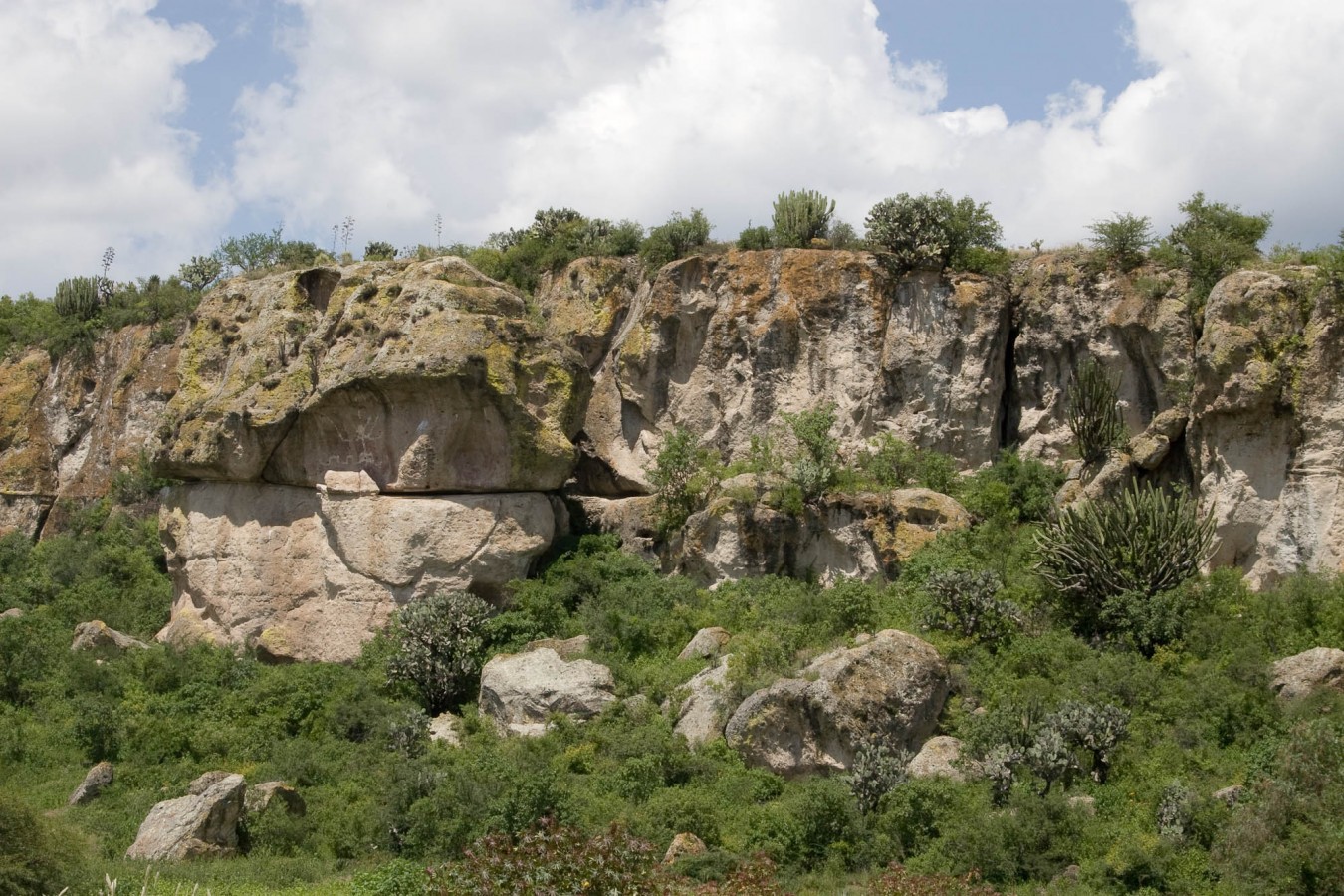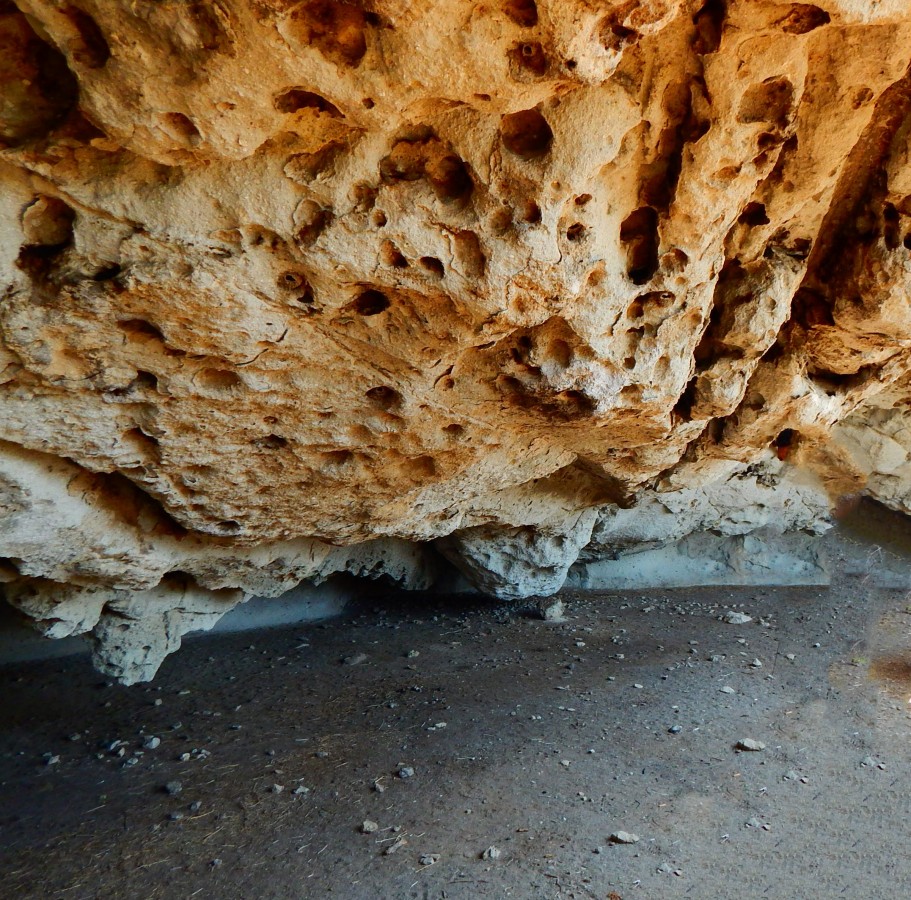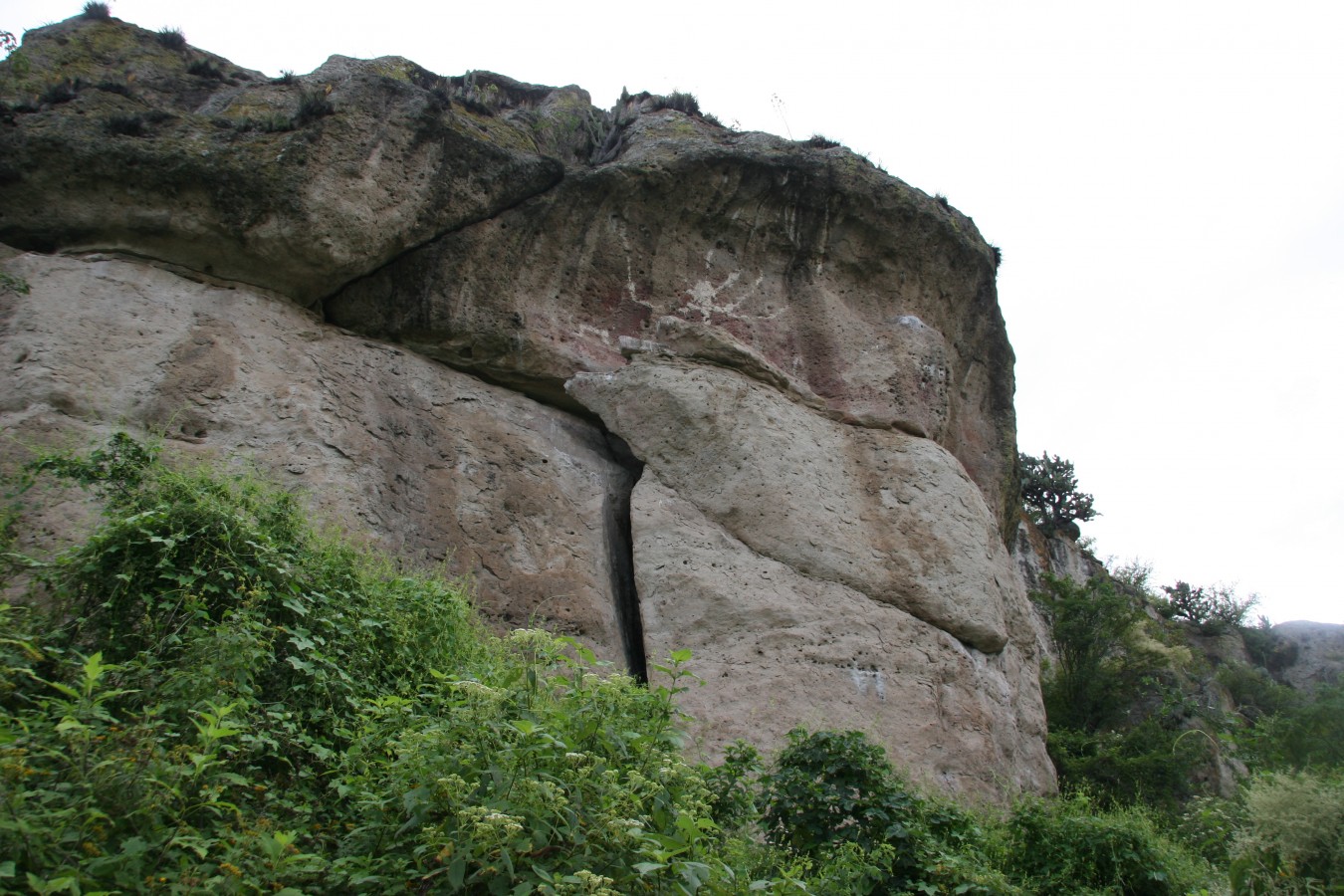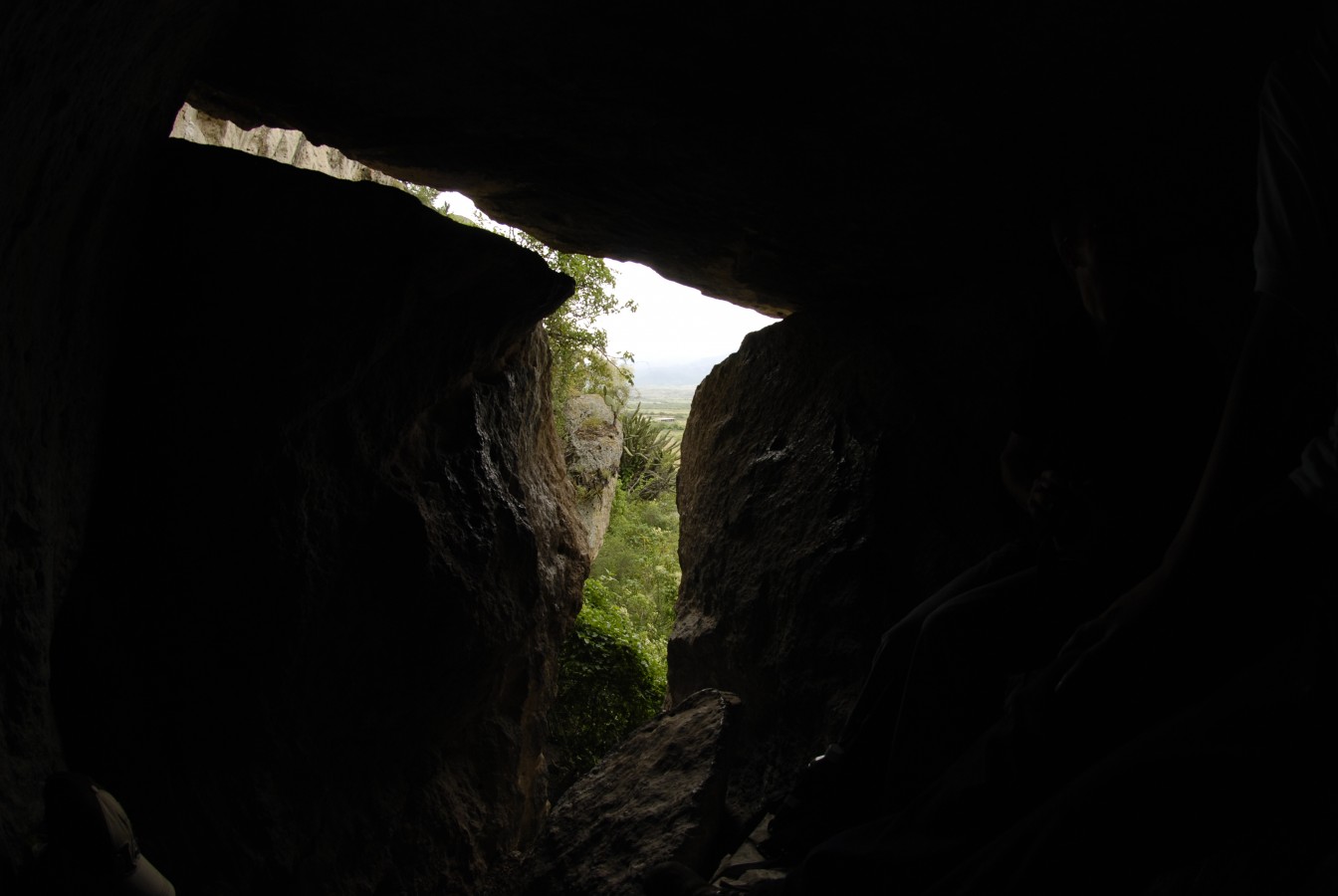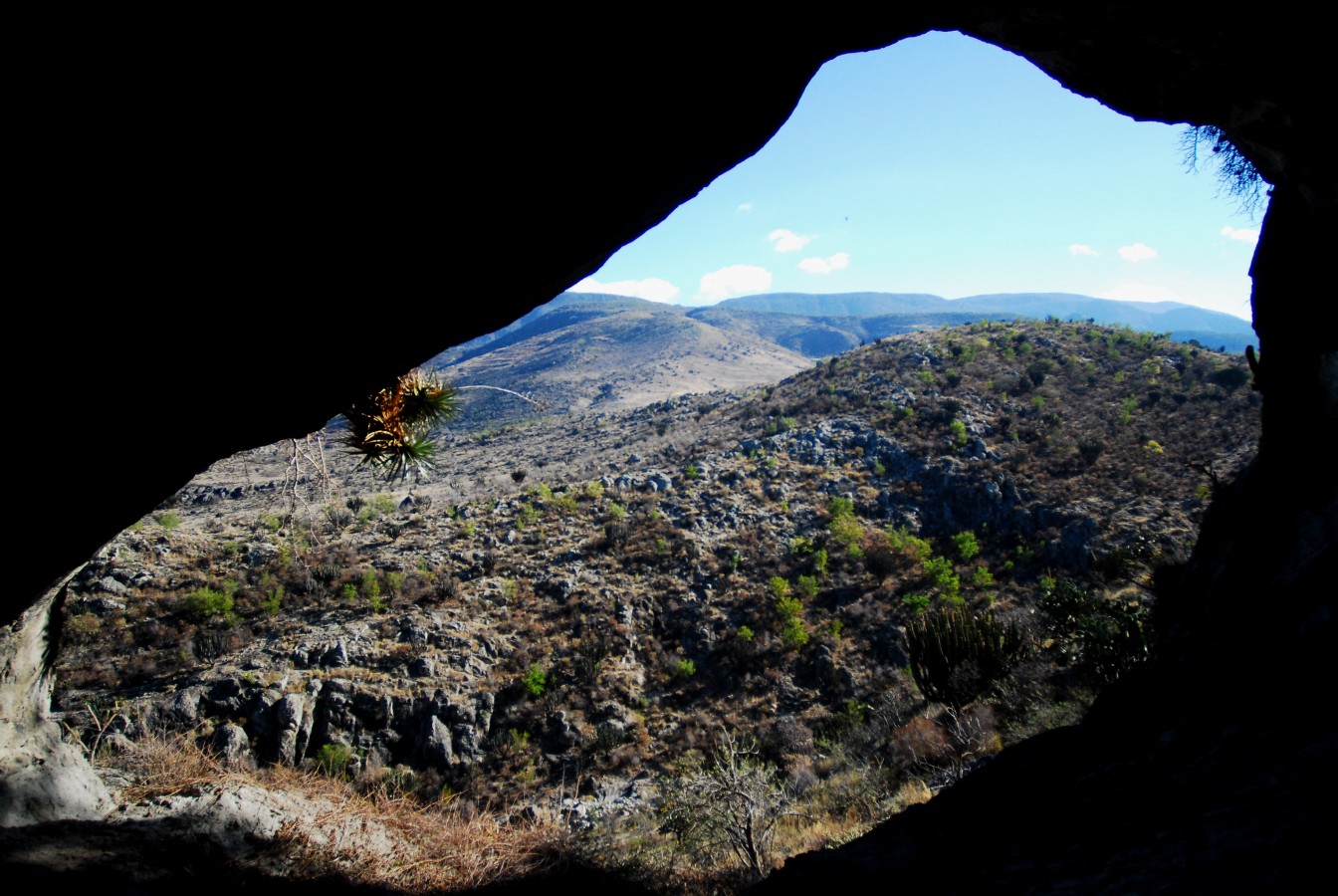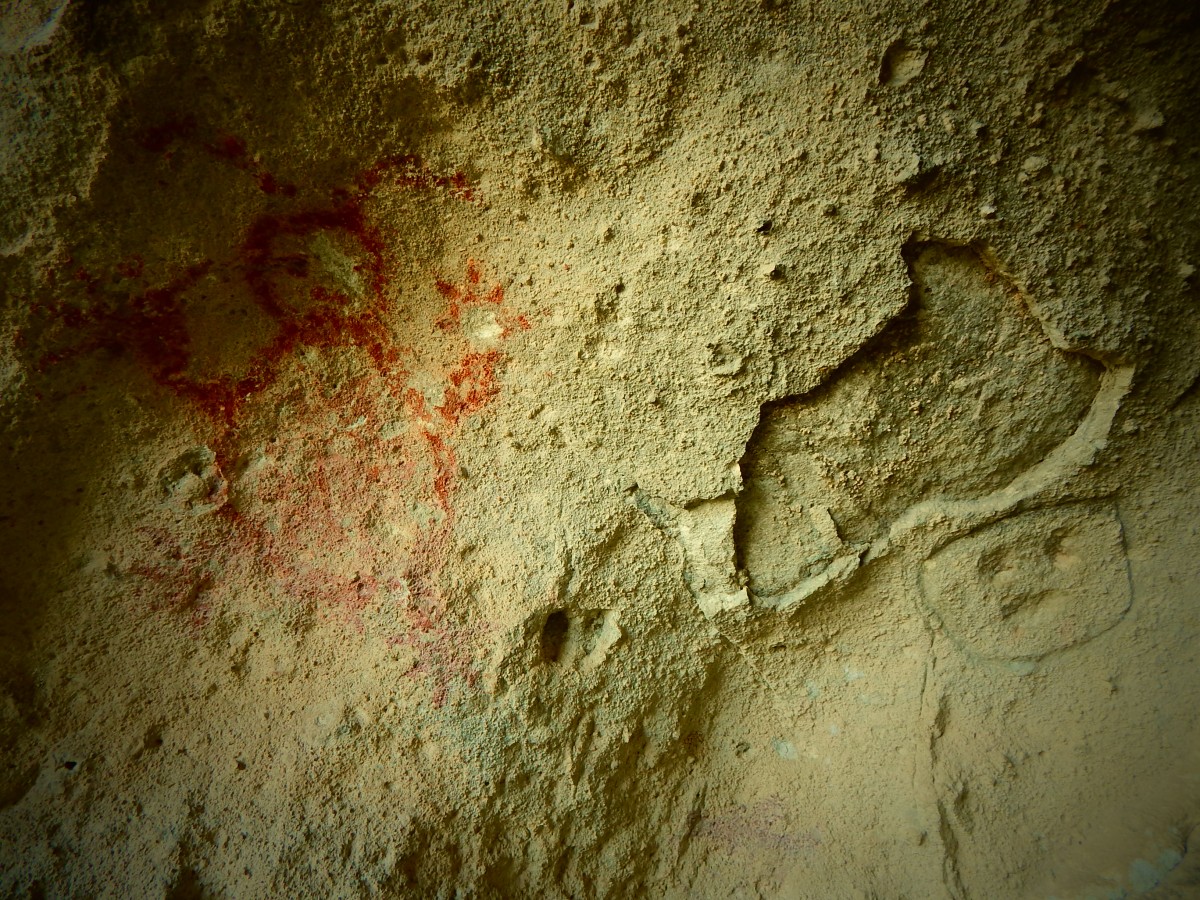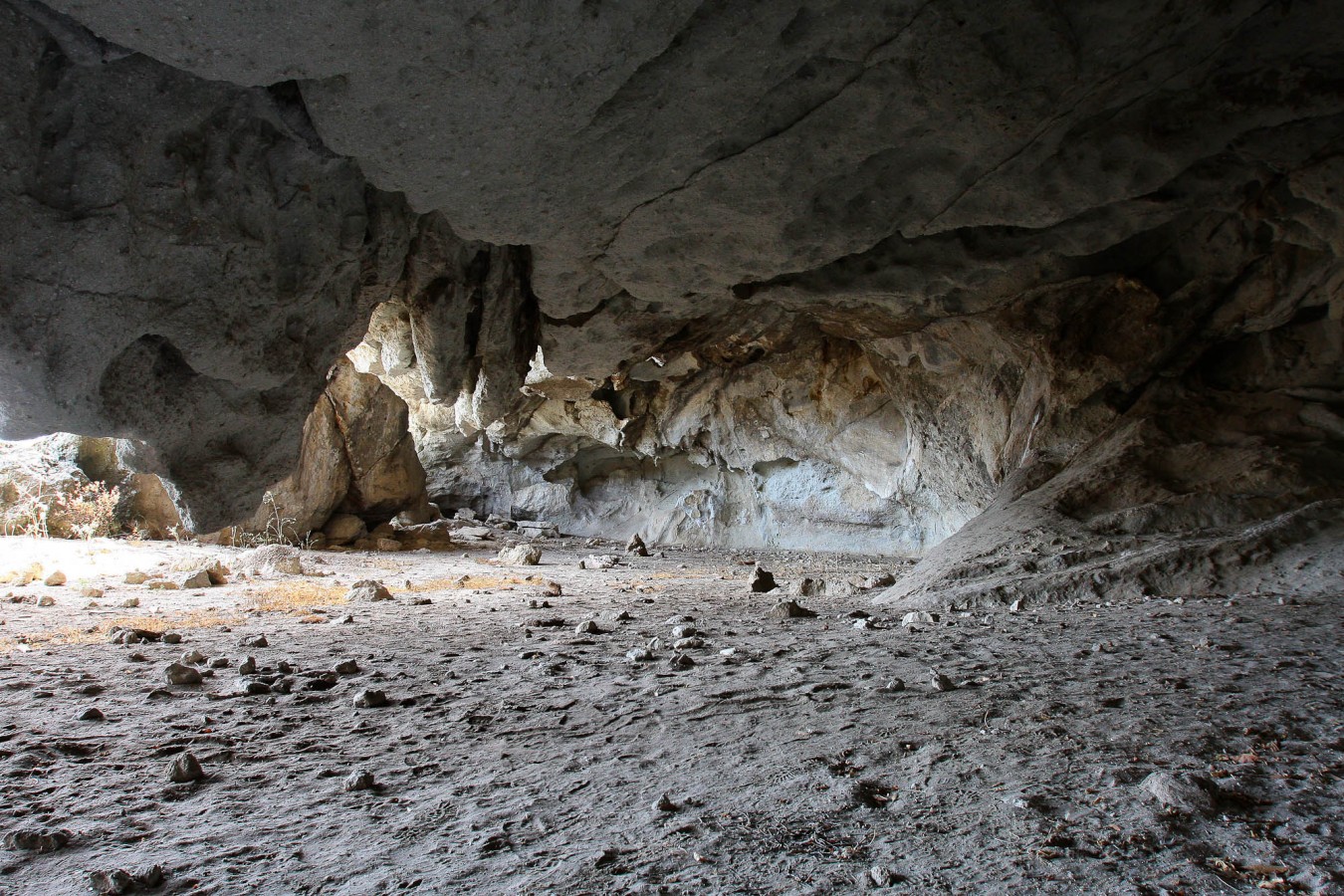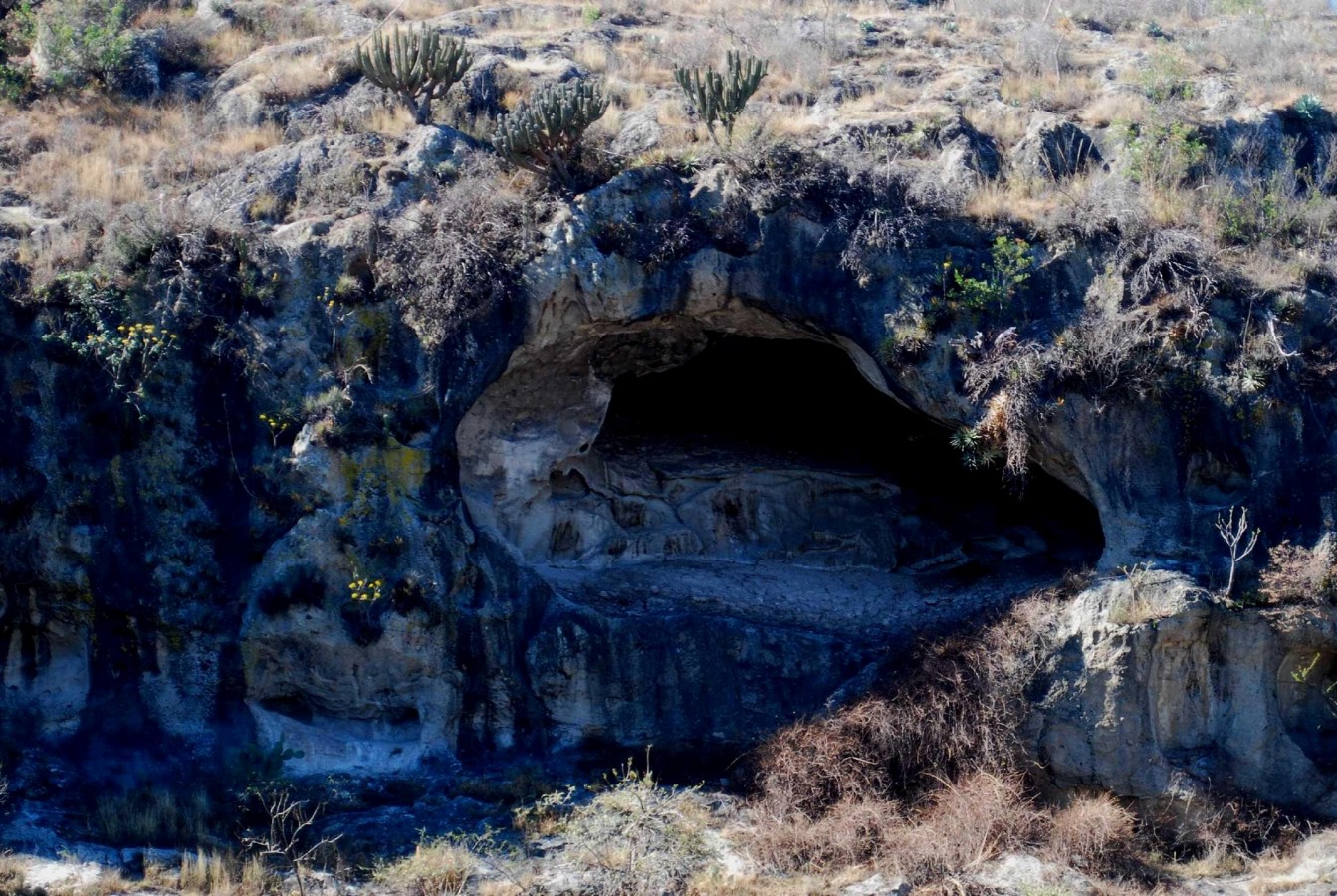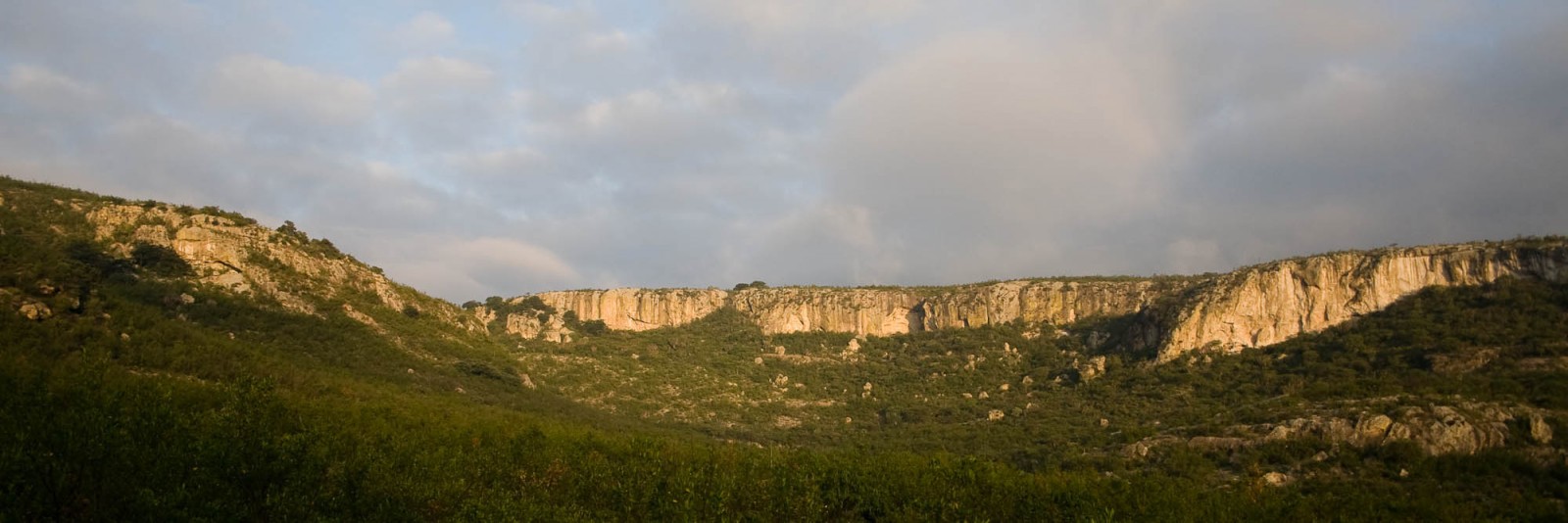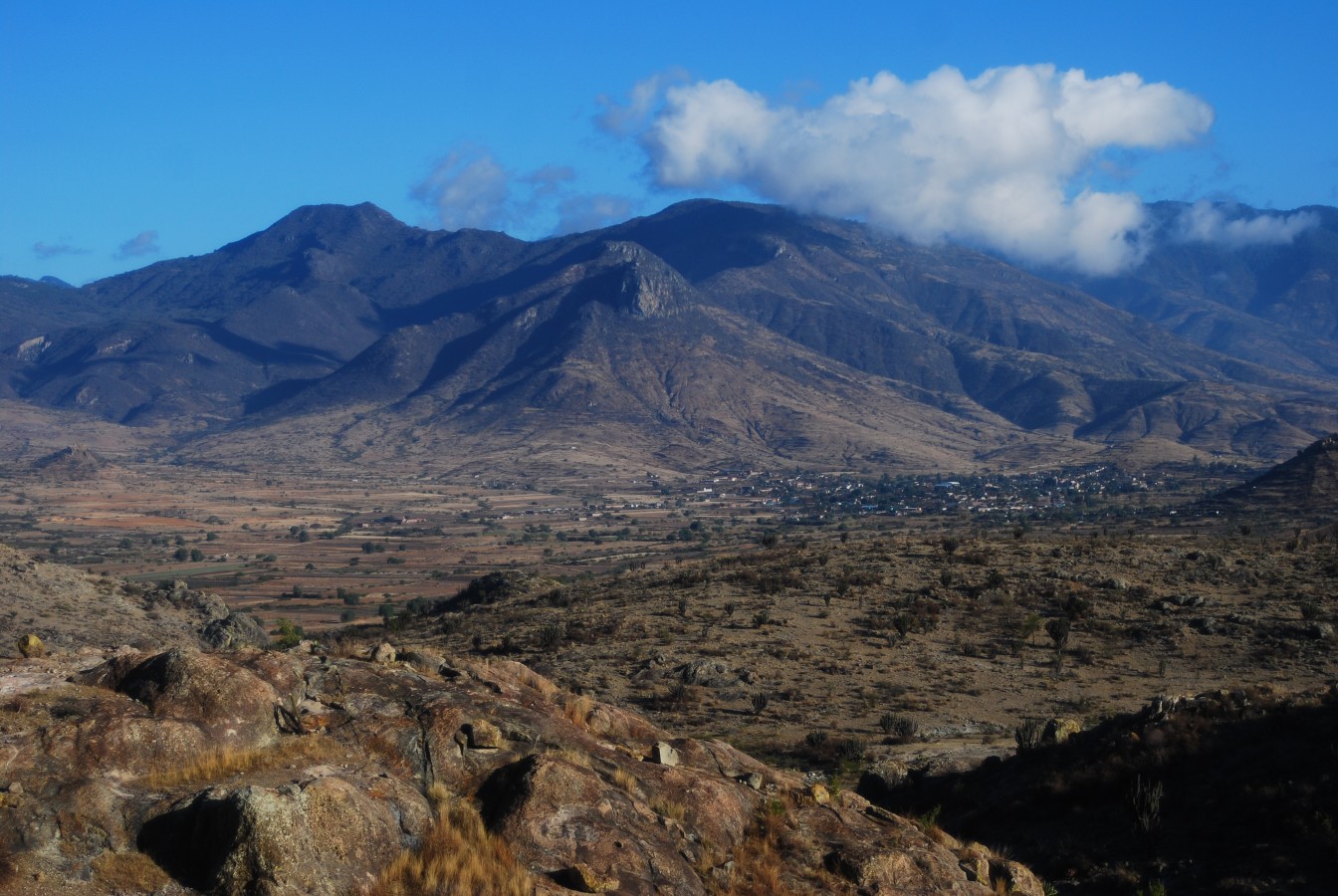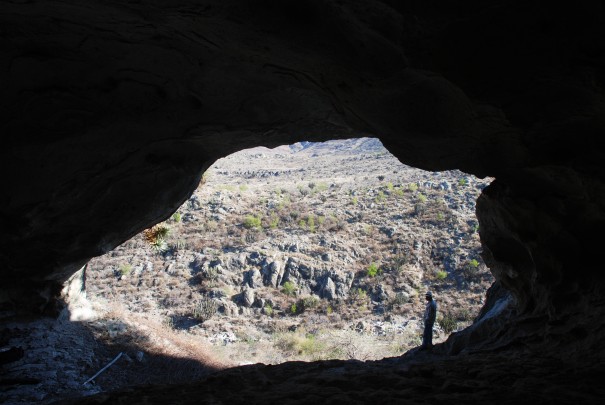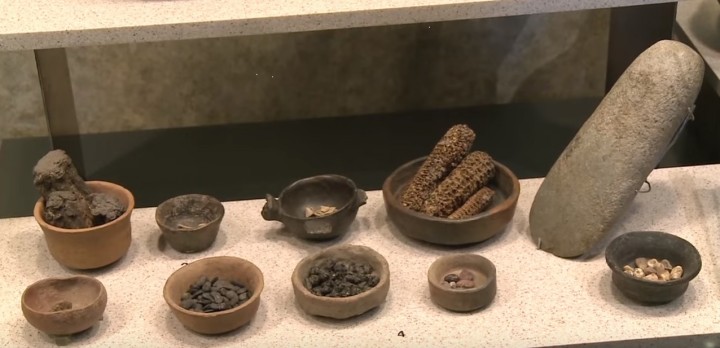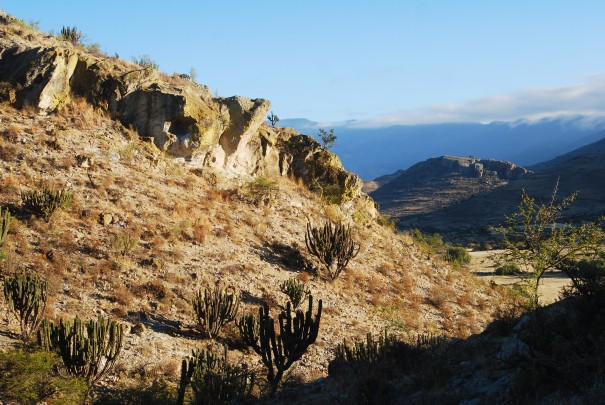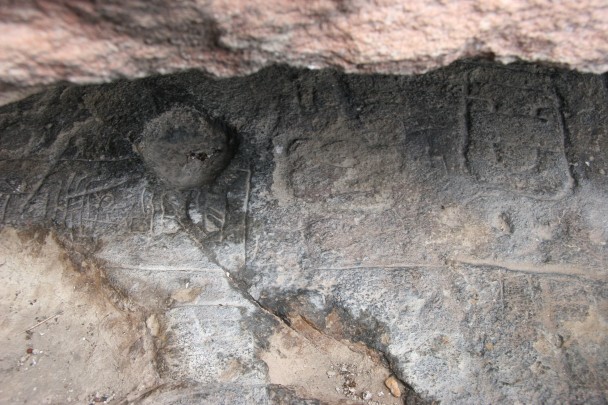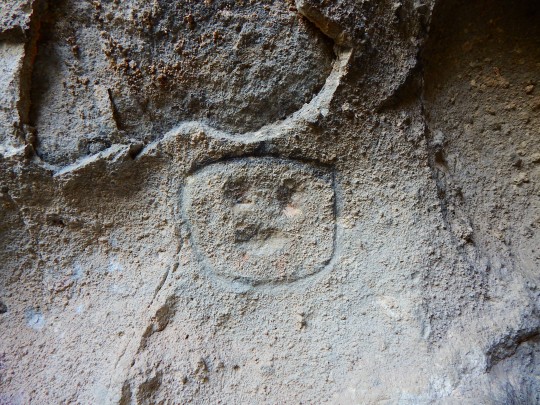Cuevas de Mitla y Yagul
Situated in the Valley of Tlacolula, this site encompasses a series of prehistoric caves and rocky shelters with cave paintings that date back 12,000 years. The earliest remains of domesticated plants were also found here. On August 1, 2010 the prehistoric caves of Yagul and Mitla in the central valleys of Oaxaca became a UNESCO World Heritage Site.
World heritage since 2010
About the site
In an extensive territory which is an example of low deciduous forest, the prehistoric caves of Yagul and Mitla in the central valleys of Oaxaca are of outstanding universal value with a variety of extraordinarily rich sites preserving very ancient evidence of the domestication of plants, especially corn, as well as a veritable compendium of plants useful for human survival.
The cultural landscape of the prehistoric caves of Yagul and Mitla consists of a series of caves and rock shelters with remains of human occupation going back to prehistoric times around 12,000 years ago. The main sites are named Duvil-Yasip, Yagul, Caballito Blanco, Los Compadres, El Fuerte, Corral de Piedra and Fortaleza de Mitla.
With the aim of documenting the archeological evidence, the National Institute of Anthropology and History began a long-term research and conservation project at the prehistoric caves of Yagul and Mitla in 1986, covering the investigation and detailed documentation of all the caves, rock shelters and open sites including workshops, camps and quarries.
To date this project has recorded more than 100 caves and rock shelters with a high percentage of human occupation. The clearest evidence of this occupation can be seen at these sites, such as rock paintings and carvings, as well as the presence of lithic materials on the surface which demonstrate the development of stone artifacts in different cultural periods.
Because of its importance as a most ancient site, in 2010 UNESCO registered the prehistoric caves of Yagul and Mitla as a World Heritage Site, in the category of cultural landscapes of outstanding universal value.
The cultural landscape of the prehistoric caves of Yagul and Mitla consists of a series of caves and rock shelters with remains of human occupation going back to prehistoric times around 12,000 years ago. The main sites are named Duvil-Yasip, Yagul, Caballito Blanco, Los Compadres, El Fuerte, Corral de Piedra and Fortaleza de Mitla.
With the aim of documenting the archeological evidence, the National Institute of Anthropology and History began a long-term research and conservation project at the prehistoric caves of Yagul and Mitla in 1986, covering the investigation and detailed documentation of all the caves, rock shelters and open sites including workshops, camps and quarries.
To date this project has recorded more than 100 caves and rock shelters with a high percentage of human occupation. The clearest evidence of this occupation can be seen at these sites, such as rock paintings and carvings, as well as the presence of lithic materials on the surface which demonstrate the development of stone artifacts in different cultural periods.
Because of its importance as a most ancient site, in 2010 UNESCO registered the prehistoric caves of Yagul and Mitla as a World Heritage Site, in the category of cultural landscapes of outstanding universal value.
Did you know...
- The prehistoric occupation of these caves demonstrates a close link between man and nature.
- The Guila Naquitz cave finds include 10,000-year-old seeds of the gourd family (cucurbitaceae). These are the earliest traces of domesticated plants yet discovered on the American continent.
- Ears of corn have also been found, providing some of most ancient evidence for the domestication of this plant.
Practical information
Requires reservation
Tuesday to Sunday from 10:00 ti 16:00 hrs.
Free entry
Para la visita es necesario hacer una solicitud en las oficinas del Centro-INAH de Oaxaca y al Comisariado de Bienes Comunales Unión Zapata.
Carretera Internacional Cristóbal Colón 1075 km 33 Oaxaca - Tehuantepec.
Services
-
+52 (951) 568 0316
-
This email address is being protected from spambots. You need JavaScript enabled to view it.
-
FACEBOOK
Directory
Jefe del Corredor Arqueológico de Oaxaca
Arqlgo. Agustín Andrade Cuautle
This email address is being protected from spambots. You need JavaScript enabled to view it.
+52 (951) 568 0316

